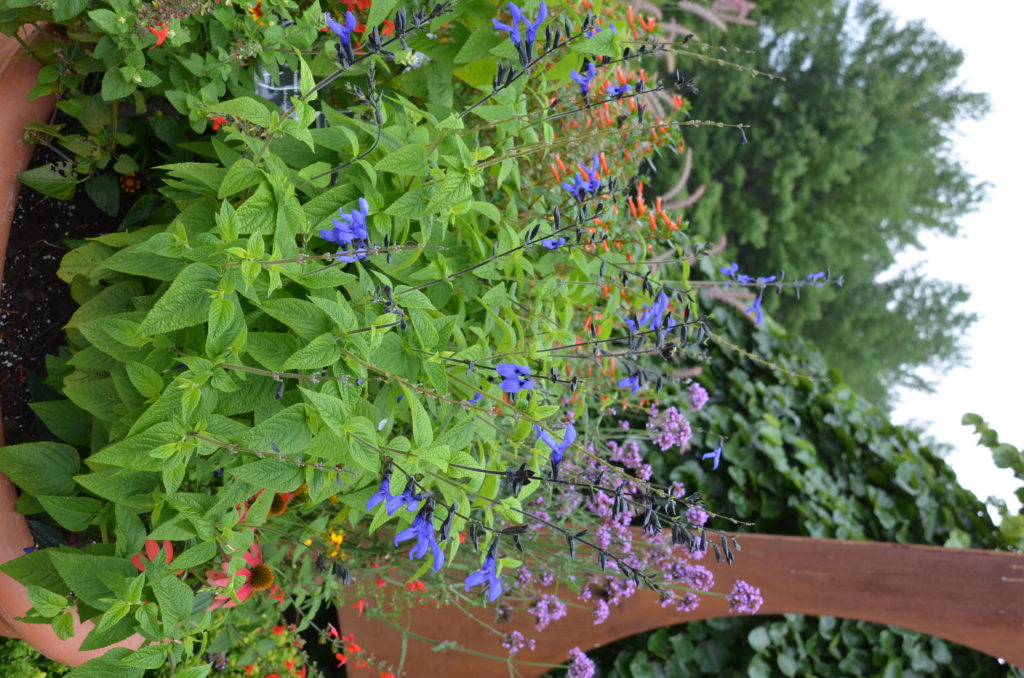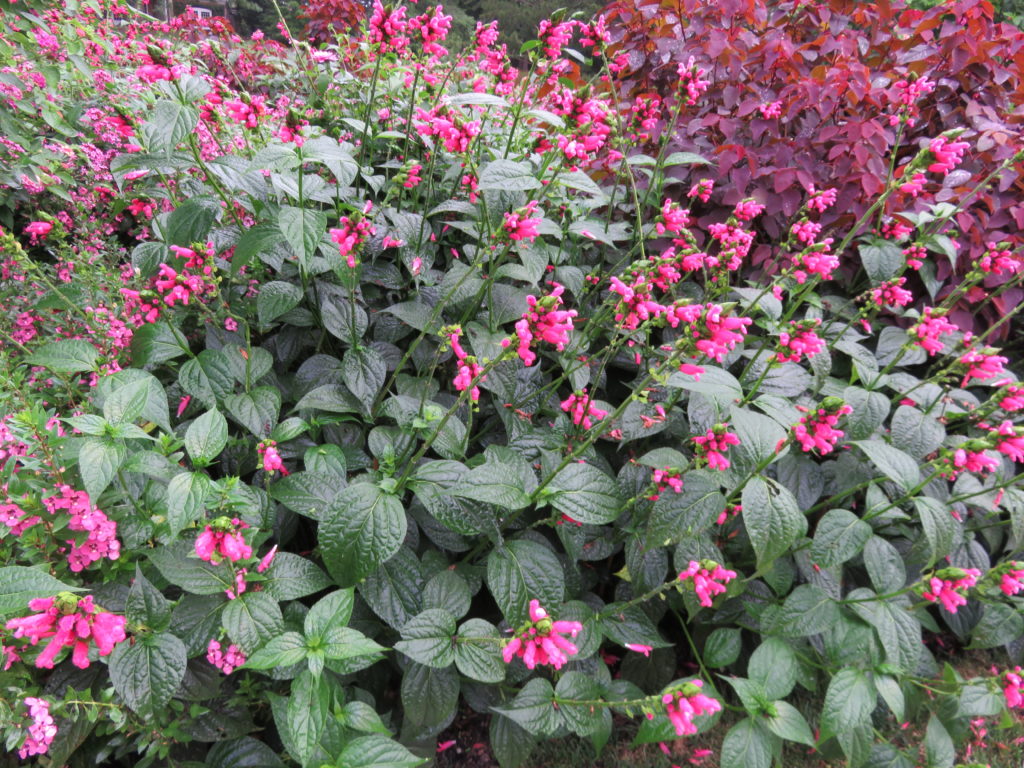
Back in early spring you may have planted several kinds of salvias (sages). The arrival of the cool autumn weather turns up the flower power of sages. They’re members of the mint family and the leaves emit a mild anise scent when crushed.
Looking ahead to summer of 2024, here are three salvias that you might try in your garden. All are native to central South America (zones 8-10). There are no guarantees that plants will survive TN, VA or NC winters as they’re rated as tender perennials there.
Blue anise sage (Salvia guaranitica) is primarily grown as a garden annual in TN. Through most of summer into fall, its electric blue, two-lipped, tubular, 2 inches long flowers contrast strikingly with the blackish stems. ‘Black and Blue’ is hardier than other cultivars and often survives milder winters if well-mulched. Plants develop a shrubby, somewhat open habit with upright branching, to 3-5 feet tall as a perennial and 2 ½ to 3 feet tall as an annual in garden beds and in large containers. ‘Black and Bloom’ is a newer variety rated more heat, humidity, and drought tolerant. It will survive milder winters. Dark green roundish leaves measure 2-5 inches in length.

Friendship Sage (Salvia x) is a showy violet-purple blooming sage. The variety ‘Armsted’ will perennialize in zone 7b and further south. It has a very long bloom season and flowers are pollinator favorites. Armsted is grow vigorously, forming a bushy 4–5-foot plant covered with spikes of purple flowers which stand above the foliage.
Fuzzy Bolivian Sage (Salvia oxyphora), aka Bolivian Spearhead Sage, is fairly new in the local garden trade, but their bright, hot pink, fuzzy blossoms will surely make them a favorite. (Zones 8-10). Fuzzy Bolivian Sage grows vigorously and can reach 4 feet high by the end of summer. The plant’s deep green tropical-like foliage is glossy green with clear, almost invisible hairs. The fuzzy hot pink spikes of flowers appear in late June and plants continue blooming through the October frost, with terminal clusters of hairy rosy-pink tubes.
General Care: Plant any of these salvias in humus-rich, medium moisture, well-drained soil in full sun to partial shade. Salvias become moderately drought tolerant 6-8 weeks after spring planting. Use in the middle of the flower gardens or in containers. This is a reliable nectar source for butterflies and hummingbirds and is seldom damaged by deer.

 Posted in
Posted in 
